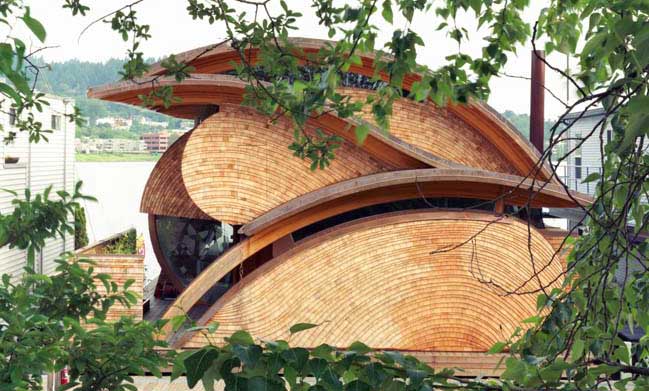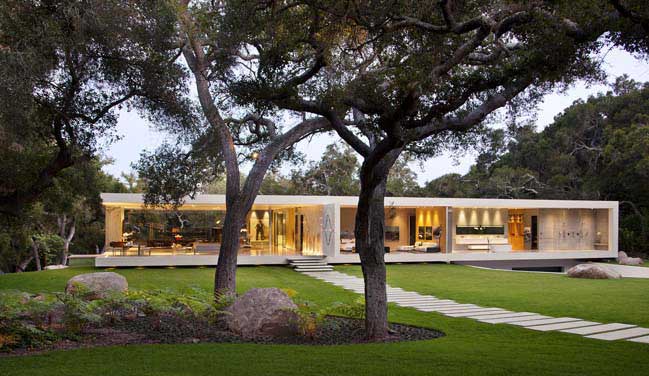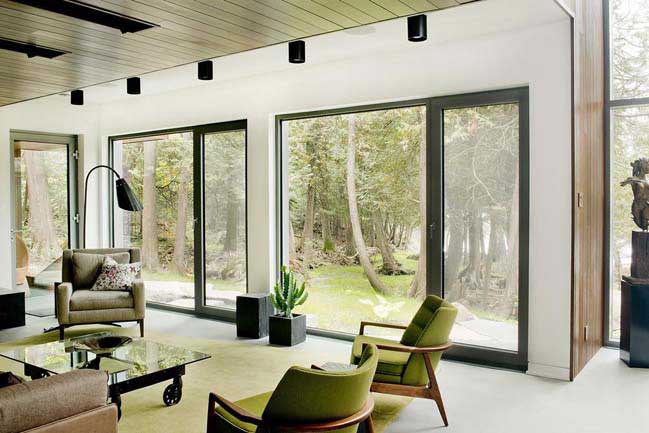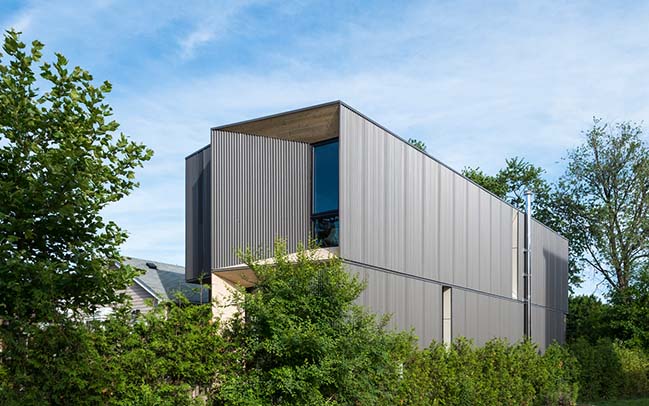11 / 15
2015
Located in the natural beauty of the location in the Santa Lucia Preserve, the Butterfly House is divided into three pavilions that are topped by expressive butterfly roofs.
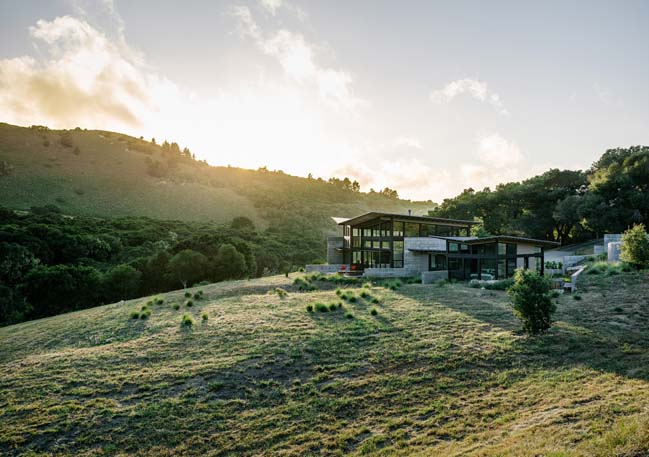
Project's description: The clients approached Feldman Architecture to design a retreat for eventual retirement and visits from their grown children—a retreat befitting the natural beauty of the location in the Santa Lucia Preserve, a 20,000 acre private development and land trust near Carmel, California. The clients were meticulous in the selection of the site, searching for two years for a spectacular piece of land that was flat enough to accommodate living on one level. In an initial meeting with Feldman Architecture, the clients noted their vision of butterflies alighting on the meadow site, which the architects took as inspiration. They also expressed a desire to integrate indoor and outdoor spaces with a simple, modern aesthetic and to provide separate spaces for their visitors.
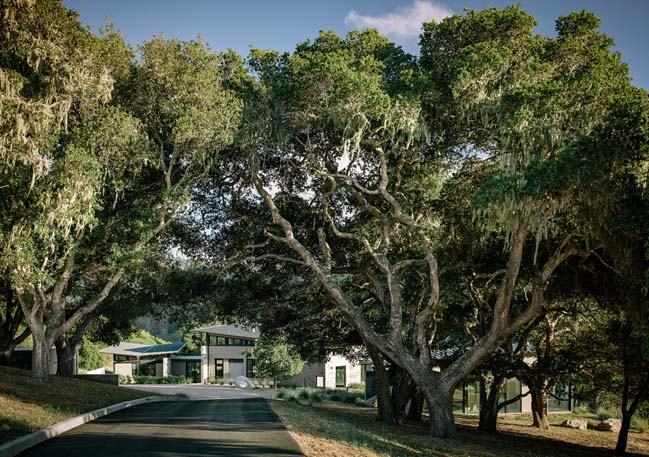
Sitting lightly on the land, the house is divided into three pavilions that are topped by expressive butterfly roofs. Each pavilion has a separate function: the central pavilion houses the main living, dining, and cooking spaces, while two other pavilions provide for sleeping, bathing, and relaxing. The structures are modest in size, yet each expands into an outdoor room that opens up to dramatic views of the canyon below and hills above.
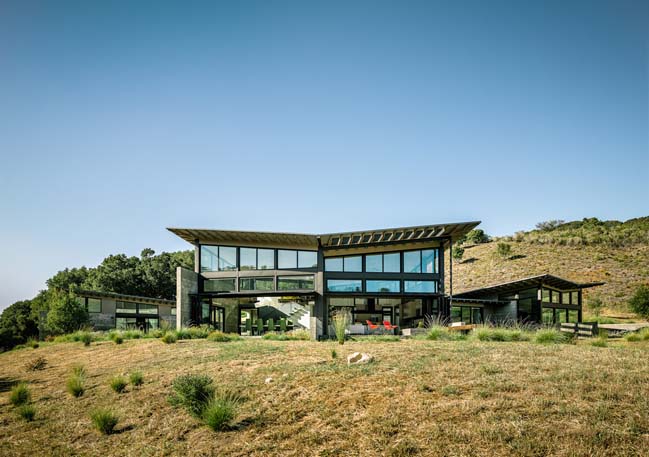
Beyond poetic gesture, the butterfly roofs bring in views of the surrounding hills, expand the main living spaces into the outdoors and also harvest rainwater. Water, an increasingly limited resource, is celebrated throughout the design. Each roof funnels water to a rain chain fountain and into landscape collection pools, which then gather in cisterns where it is stored and used to irrigate the landscape. In addition, the pavilions were sited to allow storm water to flow under the office bridge during the rainy season and seep slowly into the ground in the main courtyard.
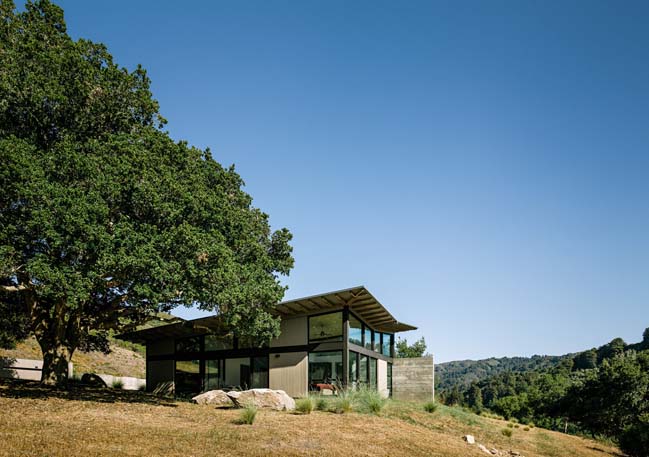
The neutral palette of the house—concrete floors and walls, large glass openings, plywood ceilings, and steel structure—flows from indoors to outdoors. The use of concrete and large expanses of glass acts as a heat sink—absorbing heat from the sunlight all day and releasing that heat at night. The house uses little energy as a result of extensive daylighting and passive thermal strategies. A large solar array located out-of-sight provides much of the energy that is used.
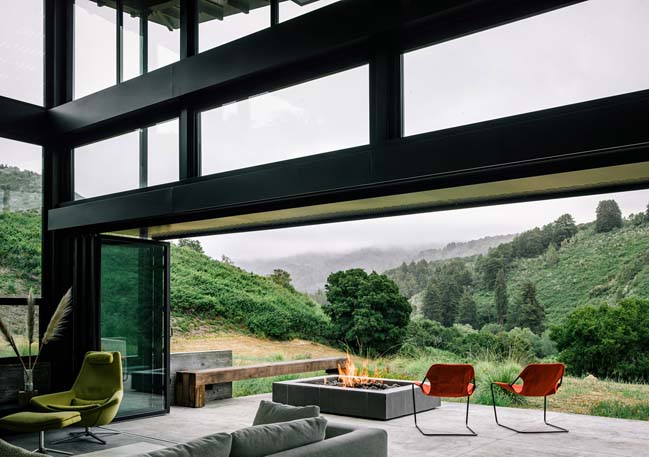
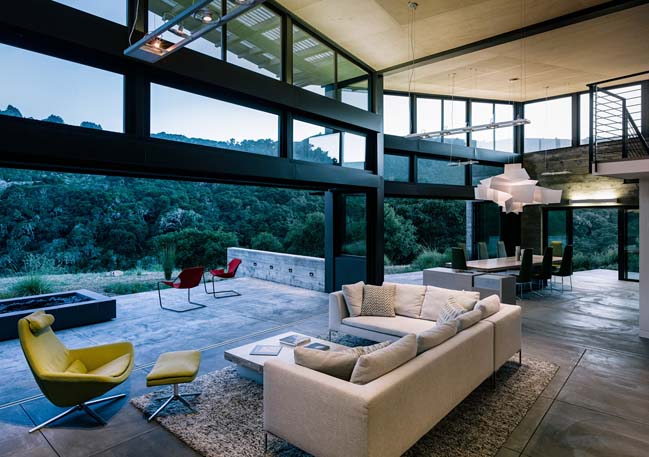
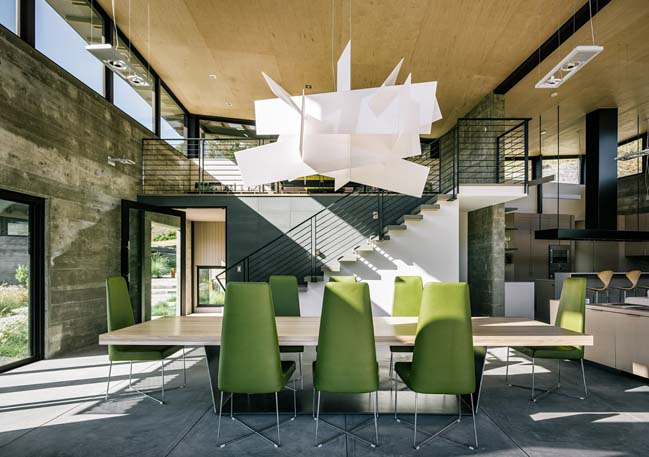
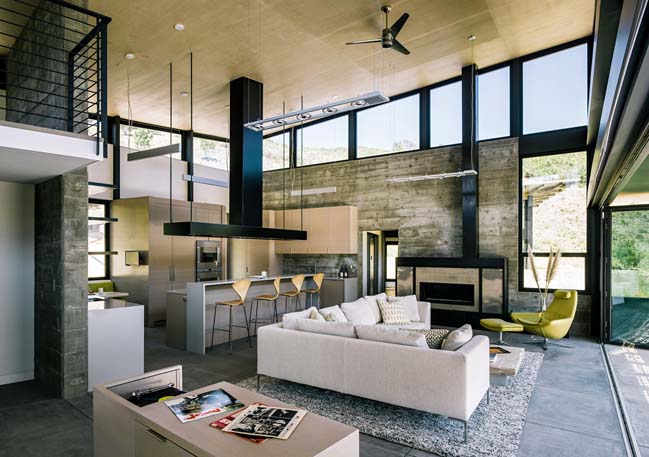
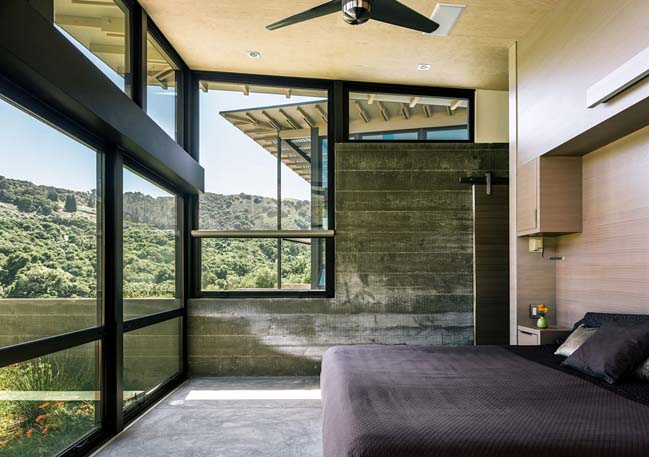
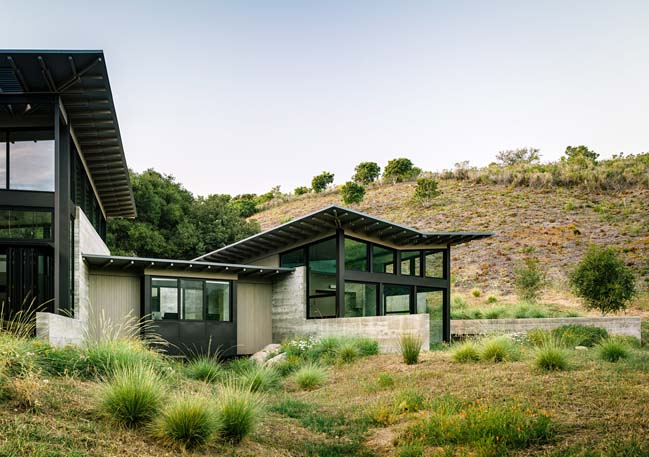
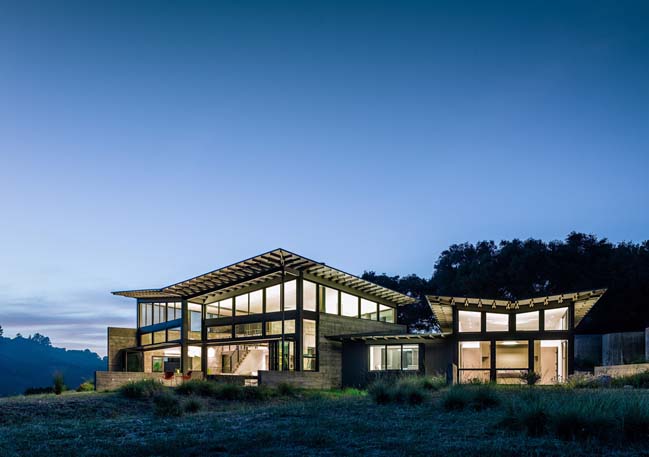
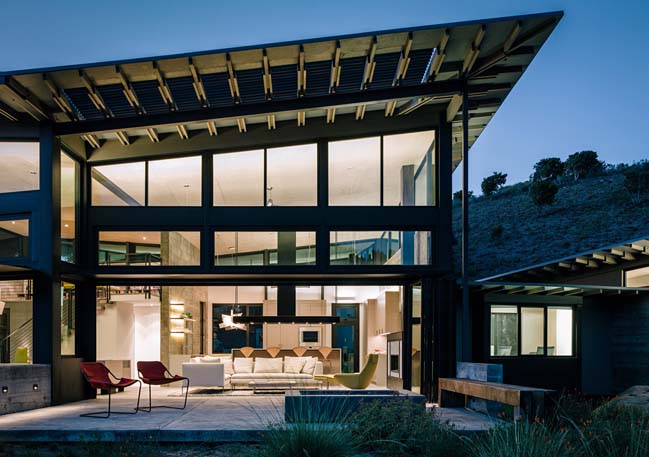
photos by Joe Fletcher
> Jerry House by Onion
> Shell shaped house by Artechnic Architects
> The Bird House by Alberto Rubio
Butterfly House by Feldman Architecture
11 / 15 / 2015 Located in the natural beauty of the location in the Santa Lucia Preserve, the Butterfly House is divided into three pavilions that are topped by expressive butterfly roofs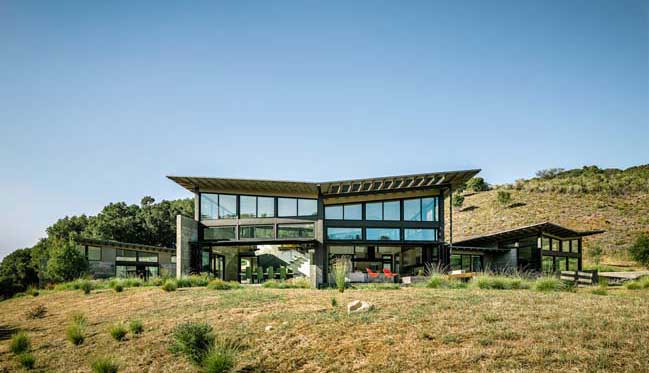
You might also like:
Recommended post: Tesseract House by Phaedrus Studio

